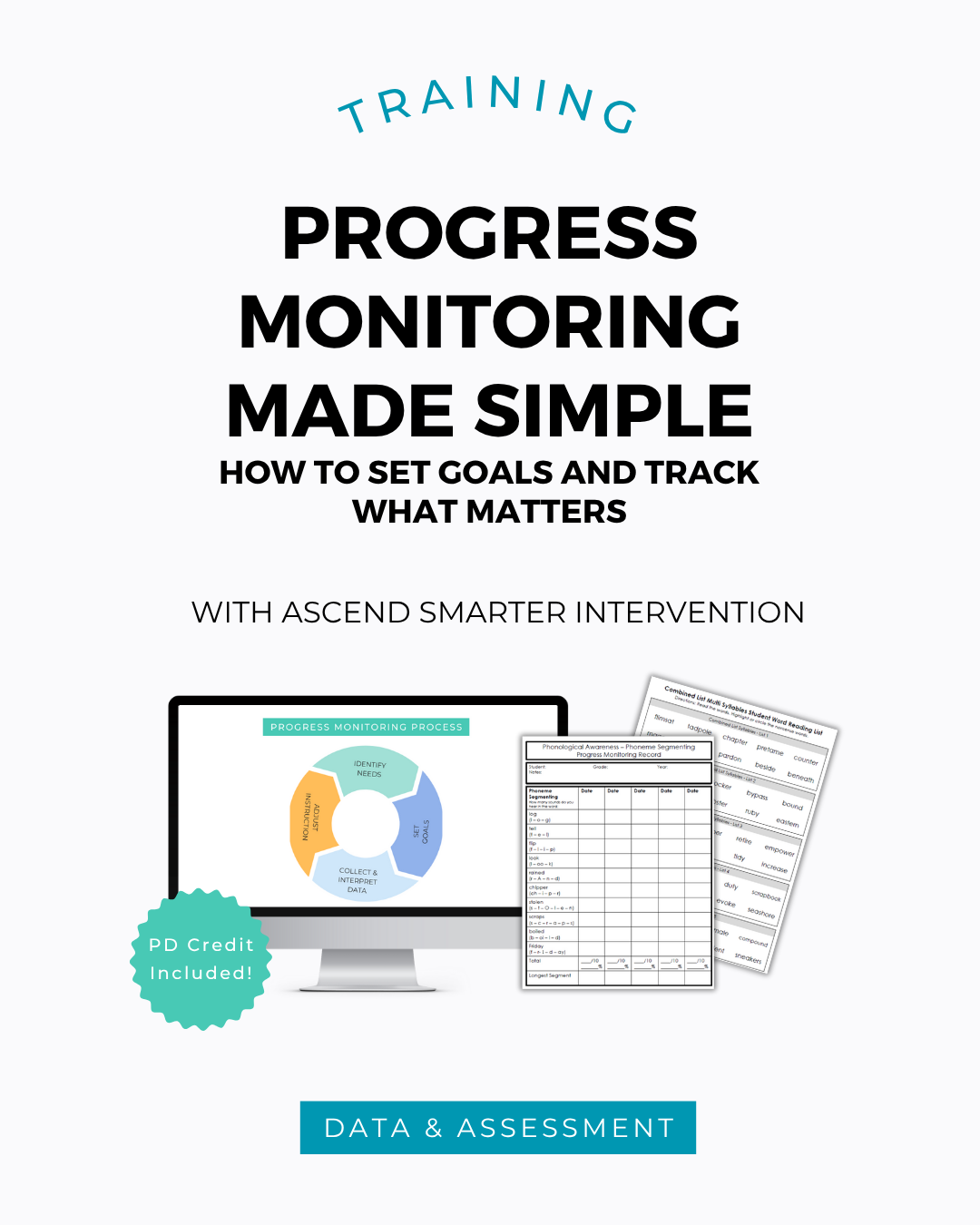The Missing Piece in the Data-Tracking Process
We all know data tracking matters.
But if we’re being honest, it can start to feel like one more checklist item. Something we have to do instead of something that helps us do our jobs better.
We collect numbers. We fill in boxes. We upload graphs for meetings.
And yet… it can still feel like something’s missing.
Because sometimes, despite all the tracking, we still can’t see the story the data is trying to tell.
And that’s the thing, we need to start seeing progress monitoring as a story, and looking into the story that information is trying to tell us.
Because at the end of the day…
Progress monitoring isn’t about the numbers or the spreadsheets. It’s about connection.
Progress monitoring connects you to your students’ growth. It connects you to your instruction. It’s honestly what brings life back to your teaching, what brings you back to the decision-maker.
I think part of the reason we love progress monitoring so much is because it provides that moment of connection and empowerment in our teaching. We see the numbers and it gives a chance to really reflect on “what’s next here?”
When we track data just to report it, we lose sight of what it’s really for. But when we use data to guide us, to help us reflect, to celebrate what’s working and adjust what’s not, that’s when progress monitoring becomes so meaningful.
It’s not about the numbers. It’s about staying connected to the process of growth.
What Connected Progress Monitoring Looks Like
When we are thinking about progress monitoring in this way, it changes things. It shifts your focus from collecting data to using it.
It’s the moment when you jot a quick “+ / –” after a lesson and realize, “Oh, she’s finally starting to blend those sounds independently.”
It’s when you track a student’s fluency over a few weeks and can show them how much they’ve grown. So incredibly powerful for your students (and ours LOVE this practice!!!)
It’s when you look at the data from your small group and think, “Okay, this skill is solid, now we can move to the next one.”
That’s what progress monitoring is really about. It’s not about a spreadsheet. It’s not about checking off a compliance task. It’s a conversation between you, your students, and their learning.
The Cost of Disconnection
And here’s the thing, when progress monitoring becomes disconnected from instruction, we feel it. Students stop seeing their growth. We feel buried in paperwork. Parents hear numbers, but don’t really understand the meaning.
And in the middle of all that, we lose confidence. We start to question if the time we’re spending on data is even making a difference. When systems are scattered (you know, sticky notes here, spreadsheets there, forms everywhere), the throughline gets lost. We can’t easily see what’s working or where to focus next.
Bringing it all together
Progress monitoring should give you clarity, not one more thing to do. It should make your teaching easier, not busier. If you’re ready to bring that kind of clarity to your own progress monitoring process, we created an incredibly actionable professional development training to help.
Because when you have a simple, organized system where you can:
Identify student needs
Set measurable, SOR-aligned goals
Track progress in real time
…you can finally see the full picture. You can follow your students’ story of growth as it unfolds. You can actually use the data to guide your instruction. That’s what it means to stay connected to the process of growth.
Because that’s what progress monitoring is really about.
If you’re interested, take a minute to check it out. We promise it will be one of the most useful and practical professional development trainings you take!
Progress Monitoring Made Simple: How to Set Goals and Track What Matters.
Inside, we’ll walk you through how to identify student needs, set effective goals, and use our comprehensive toolkit, complete with hundreds of ready-to-use progress monitoring probes for phonological awareness, phonics, vocabulary, fluency, comprehension, and writing.


